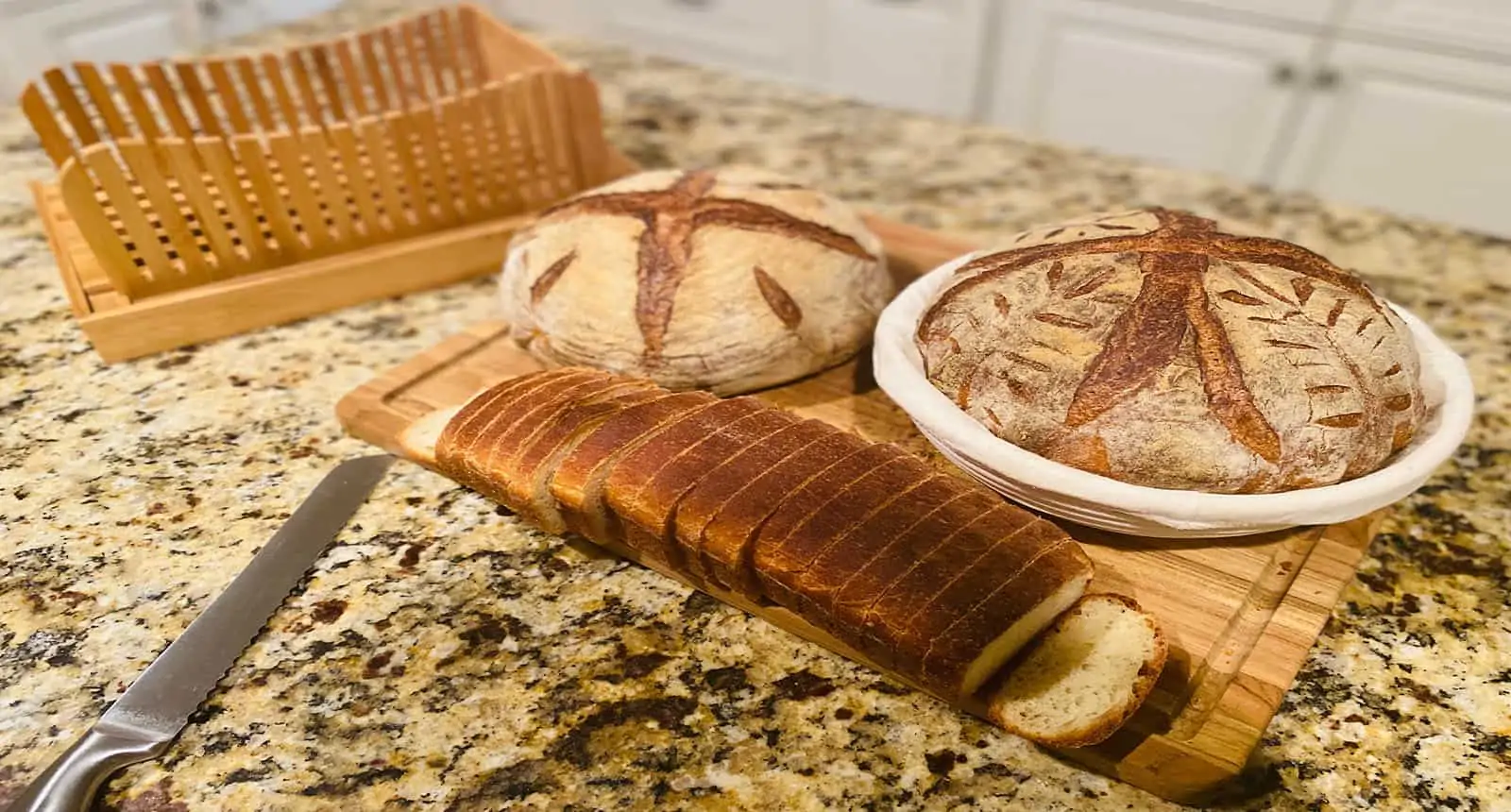
How to Use a Bread Lame: Mastering the Art of Scoring Bread
Bread baking is an ancient craft that has evolved over centuries. One of the secrets to creating visually appealing and delicious loaves lies in the art of scoring the bread. A bread lame, a small tool with a sharp blade, is your key to achieving those exquisite patterns on the loaf’s surface.
In this comprehensive guide, we’ll walk you through every aspect of using a bread lame, from understanding its anatomy to perfecting your scoring techniques.
Using a Bread Lame: Unleashing the Magic
What is a Bread Lame and Why is it Essential?
A bread lame, pronounced “lahm,” is a straightforward but effective tool that bakers use to make precise cuts on the surface of bread dough. The term “lame” comes from the French word for “blade.” This tool allows bakers to control the direction and depth of the cuts, which influence how the bread expands while baking. The controlled expansion results in a beautifully risen loaf with a crisp crust.
Gathering Your Bread Lame Essentials
Before diving into the scoring process, it’s crucial to ensure you have the necessary tools at your disposal. Here’s a quick checklist:
- A high-quality bread knife with a replaceable blade
- Freshly prepared bread dough
- A steady hand and a creative vision
See more: Apple Ricotta Tart Recipe
Step-by-Step Guide to Scoring Bread Like a Pro
1. Preparing Your Bread Dough: Start by preparing your bread dough according to your favorite recipe. Allow it to undergo its initial rise.
2. Shaping the Dough: Gently deflate the risen dough and shape it into your desired loaf. Place it on a well-floured surface for final proofing.
3. Choosing a Scoring Pattern: This is your chance to get creative! Decide on the pattern you’d like to create on the bread’s surface. Classic options include single slashes, chevrons, or intricate designs.
4. Holding the Bread Lame: Hold the bread lame at a slight angle to the dough’s surface. This will ensure clean cuts without compressing the dough.
5. Making the Cuts: With a swift and confident motion, make your cuts on the dough’s surface. The depth of the cuts will vary depending on the type of bread you’re making.
6. Baking Your Masterpiece: Transfer the scored dough to a preheated oven and bake according to your recipe’s instructions. The cuts you’ve made will guide the bread’s expansion, resulting in an artistic and mouthwatering outcome.
Expert Tips and Tricks for Stellar Scoring
- Practice Makes perfect. Don’t be discouraged if your first attempts aren’t flawless. Scoring bread is a skill that improves over time. Embrace the learning process!
- Blade Maintenance: Keep your bread lame blade sharp for precise cuts. Replace blades when they show signs of dullness.
- Experiment with Angles: Altering the angle of your cuts can lead to various patterns and effects on the bread’s surface.
- Flour Power: Dusting your dough lightly with flour before scoring prevents the blade from sticking.
FAQs About Using a Bread Lame
Q: Can I use a regular knife instead of a bread lame?
A: While a regular knife might work, a bread lame’s design and sharpness make it the superior choice for achieving clean cuts.
Q: Can I score dough that hasn’t risen yet?
A: It’s best to score dough that has undergone its initial rise to avoid deflating it during scoring.
Q: How do I clean and store my bread lame?
A: Clean the blade after each use and store the bread lame in a safe place away from children’s reach.
Q: Why is scoring important in bread baking?
A: Scoring controls how the bread expands during baking, influencing its final shape, texture, and crust.
Q: Can I reuse bread lame blades?
A: Some bread lame blades are replaceable, while others are designed for one-time use. Check your lame’s instructions.
Q: What types of bread benefit from scoring?
A: Scoring is commonly used in artisanal breads with a high hydration level, like baguettes and boules.
Now that you’ve unlocked the secrets of using a bread lame, you’re ready to create bakery-worthy loaves that are not only a delight to the palate but also a feast for the eyes. Experiment with different patterns, hone your technique, and watch as your bread-baking skills reach new heights. With the right tools and a touch of creativity, you can turn a simple loaf of bread into a work of art.